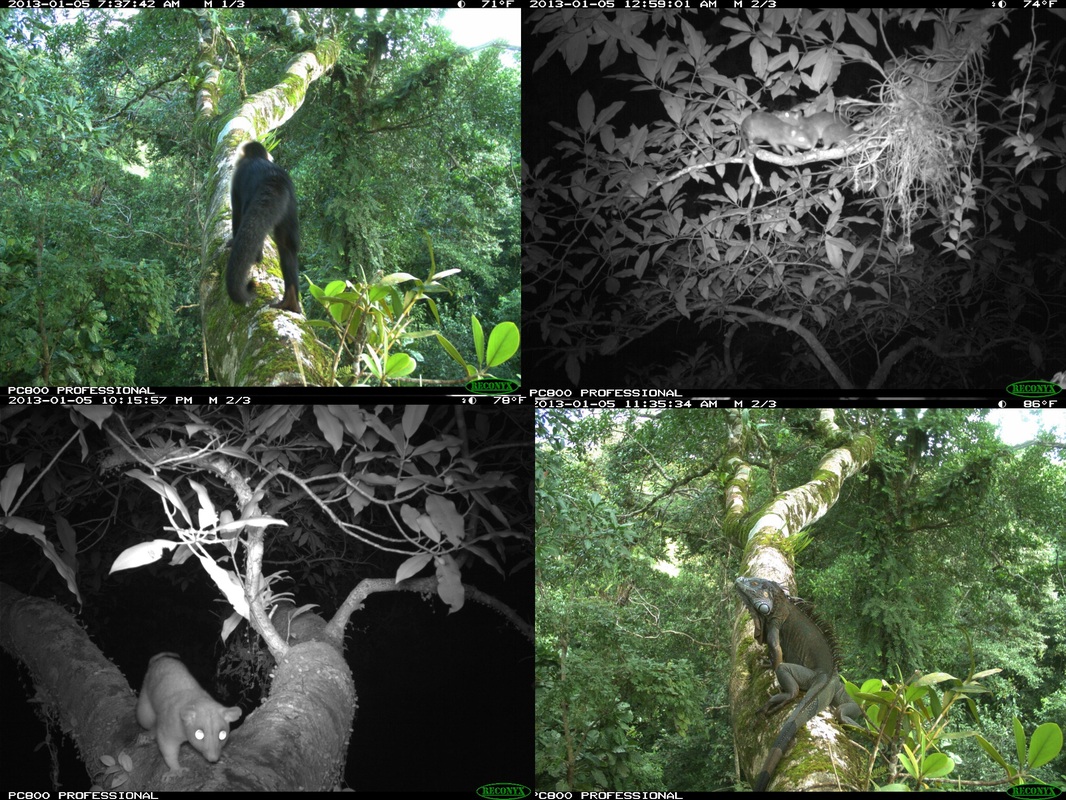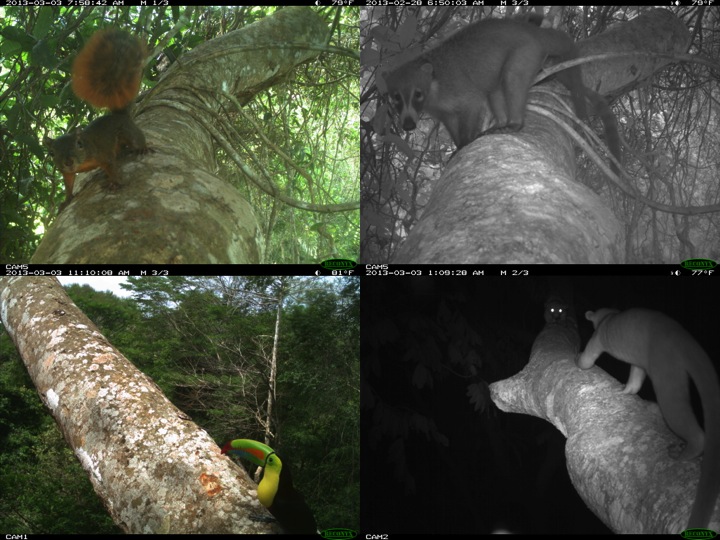|
--Kevin McLean, PhD Candidate I looked at my calendar this morning and realized that it has now been over 7 weeks since I returned from my field season in Panama. Seeing as I was only gone for 12 weeks, I suppose it is about time that I stop telling people I am still “adjusting to being back.” With that out of the way, on to the fieldwork update! I departed for Panama in mid-December to finish up the necessary training and do a bit of testing and tinkering for my dissertation research. A portion of my project will involve monitoring arboreal (tree-dwelling) mammals in the rainforest canopy using motion-sensitive cameras, or “camera traps.” While I’ve spent a fair amount of time learning how to use camera traps on the ground, setting them up 6-10 stories above the forest floor was a whole new challenge. First on the agenda was learning how to actually get into the trees. I spent three weeks at the Institute for Tropical Ecology and Conservation (ITEC) taking a tree climbing course, which I sometimes refer to as “Canopy Access Techniques for Research” to sound unbelievably fancy. While three weeks may sound excessive, one of the many goals I set for myself while working on my dissertation was to not die, and my instructor Joe Maher played integral role in giving me the training necessary to succeed in that regard. The next step was figuring out how to mount the cameras in the trees. I had a fair amount of help with this from Dr. Tremaine Gregory, who was kind enough to share the designs she used for her work in Peru. I put together a set of six mounts using a couple different designs that allowed me to monitor animals on pretty much any branch size or angle. Once I got some initial troubleshooting out of the way, I was able to get some pretty great photos of the arboreal wildlife in Bocas del Toro. Some of the species that crossed the cameras included capuchin monkeys, green iguanas, woolly opossums, and climbing rats. After about a month in Bocas I traveled to the Canal Zone to set up my cameras in the forests in the Barro Colorado Island Nature Monument. Dr. Stefan Schnitzer, the primary investigator for the Liana Ecology Project was kind enough to allow me to set up cameras on his research plots on the Gigante Peninsula. I chose two trees on Gigante peninsula, one in a plot in which all the lianas had been removed, and another in a control plot. Once again it took a bit of fiddling to get things running smoothly, but after a several solid weeks I managed to get photos of more capuchins and woolly opossums, as well as some coatimundis, kinkajous, squirrels, and toucans.
I thankfully made it back to New Haven in one piece, where I will spend my time going through photos and working on the other pieces of my dissertation until I return to Panama January 2014.
15 Comments
10/18/2016 12:56:30 am
This article is really fantastic and thanks for sharing the valuable post.
Reply
3/14/2023 05:19:54 pm
Working areas; installation, construction, replacement and plumbing services.
Reply
Leave a Reply. |
Archives
November 2019
Categories
All
|


 RSS Feed
RSS Feed
